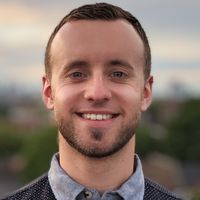3 ways to combat Seasonal Affective Disorder and feel better this winter
You can ease the symptoms of SAD and make the darker days easier to manage


As the darker, shorter days of winter arrive, many of us will experience Seasonal Affective Disorder (SAD), a type of depression thought to be caused by a reduction in exposure to natural light.
Some estimates suggest that between 10 and 25 percent of us will suffer from SAD symptoms like depression, low energy, overeating (particularly carb-heavy foods), weight gain, and oversleeping. Due to these, SAD is also sometimes referred to as the winter blues.
Like with other forms of depression, your doctor may recommend medication, but this isn't the only way to reduce the severity of SAD throughout the colder months.
1. Use a SAD lamp in your home
As the condition is linked to a reduction in natural light, it follows that increasing your exposure may ease the symptoms of SAD. But sunlight can be hard to come by, particularly if you're working during the day. Fortunately, the best SAD lamps mimic natural light, helping boost your mood.
These lightboxes have a brightness of 10,000 lux, which is far brighter than most standard lamps. You only need to sit close to the SAD lamp for an hour each day to feel the benefits. Many also come with adjustable positioning and additional brightness settings or timers.
2. Increase your Vitamin D levels
One of the reasons getting out in the sun feels good is that it helps our bodies produce Vitamin D. This essential nutrient is known to promote muscle and bone health, bolster our immune system, and even protect our mental health.
More recently, researchers found that a Vitamin D deficiency may be linked to Covid-19 infections too. While the sun evades us across the period, there are still ways to increase your Vitamin D intake over winter, like taking supplements, eating Vitamin D-rich foods, and going out for a walk.
Start your week with achievable workout ideas, health tips and wellbeing advice in your inbox.
3. Meditate and practice yoga
One of the most popular and effective non-medical treatments for depression is meditation. According to a meta-analysis of previously published studies, meditation can reduce "multiple negative dimensions of psychological stress."
Learning how to meditate can promote the connection between your brain and body and helps you concentrate on the present moment. This ability to focus on the now is often called mindfulness and is also a key element of most yoga practices.
For this reason, yoga is sometimes referred to as moving meditation. The practice has other benefits, too, including increased mobility and improved core strength. If you've not done a session before, it's worth checking out this 10-minute morning yoga routine to ease yourself into the day gently.

James is a London-based journalist and Fitness Editor at Fit&Well. He has over five years experience in fitness tech, including time spent as the Buyer’s Guide Editor and Staff Writer at technology publication MakeUseOf. In 2014 he was diagnosed with a chronic health condition, which spurred his interest in health, fitness, and lifestyle management.
In the years since, he has become a devoted meditator, experimented with workout styles and exercises, and used various gadgets to monitor his health. In recent times, James has been absorbed by the intersection between mental health, fitness, sustainability, and environmentalism. When not concerning himself with health and technology, James can be found excitedly checking out each week’s New Music Friday releases.